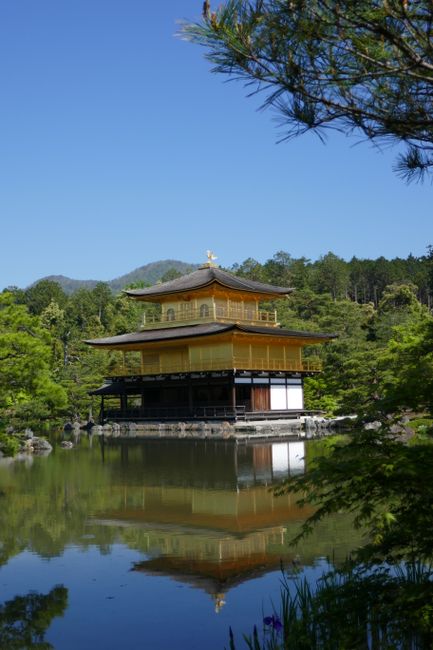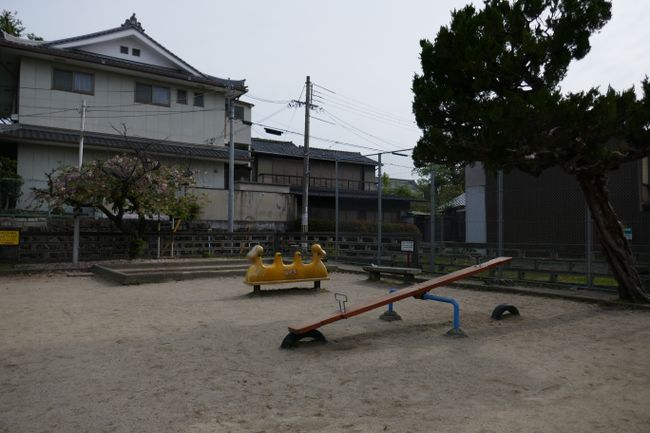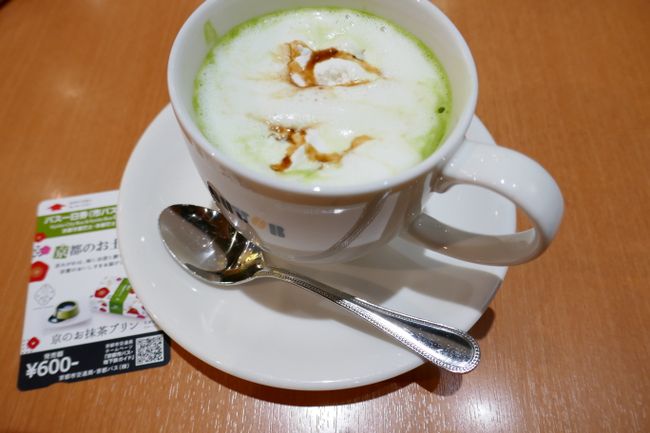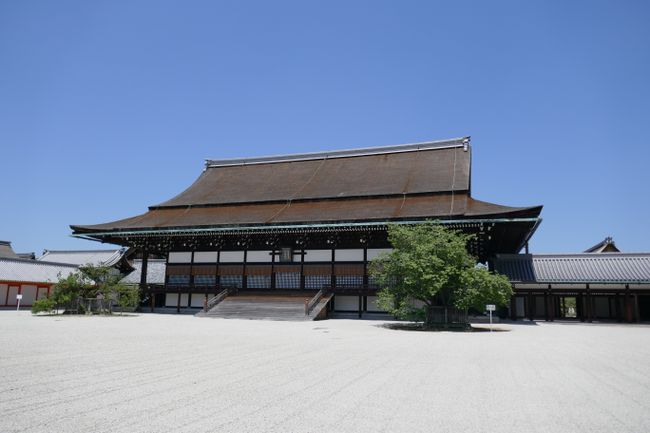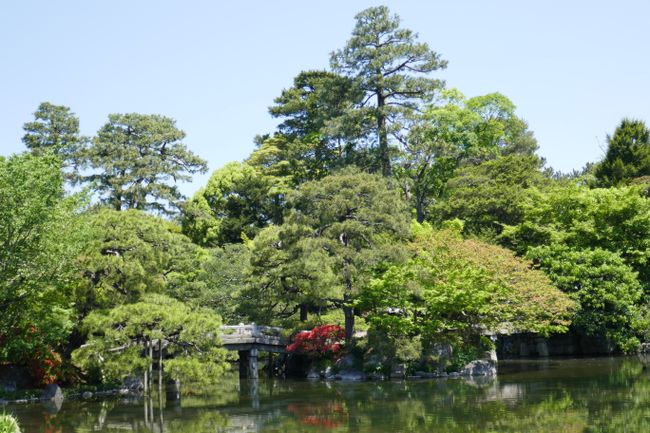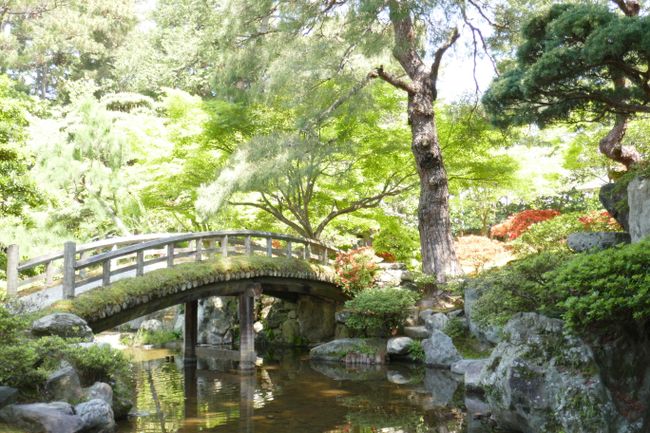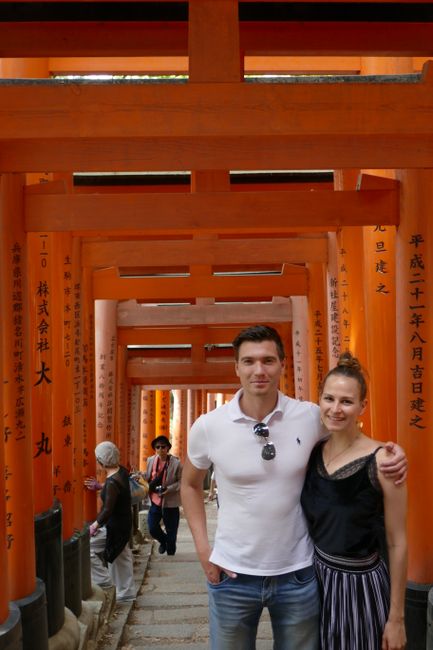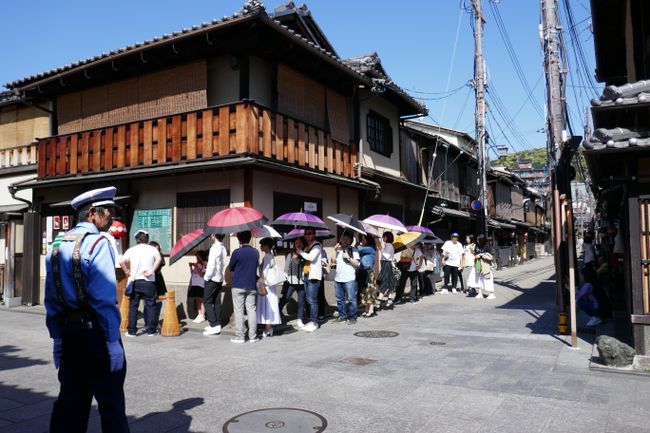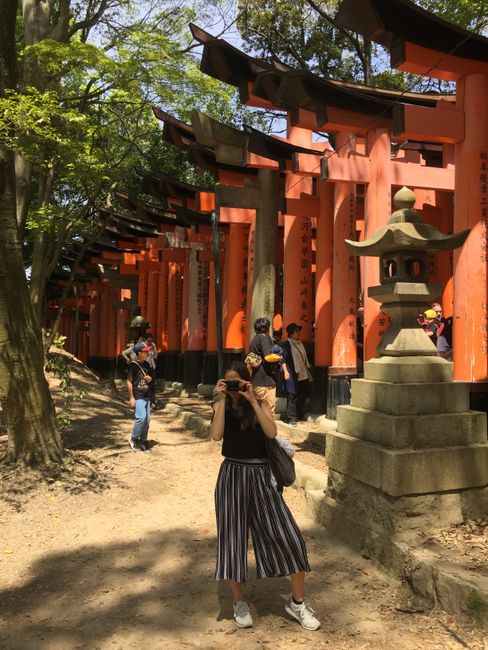Kyoto - Former capital and ancient Japan
வெளியிடப்பட்டது: 08.05.2019
செய்திமடலுக்கு சந்தாதராகவும்

After the bus ride from Hakuba, we swore never to take a night bus again. Although we could recline the seats very far back and everyone had enough space, the ride was by no means restful. The continuous 7-hour engine humming led to a constant half-asleep state.
After arriving, we decided to make the best of the day. So first to the hotel and unload the backpacks. Unfortunately, we could only check in from 4:00 p.m. With our hand luggage, we strolled through the streets and had breakfast at a playground, which Max's offline navigation system marked as a park. However, no one was there at such an early hour.
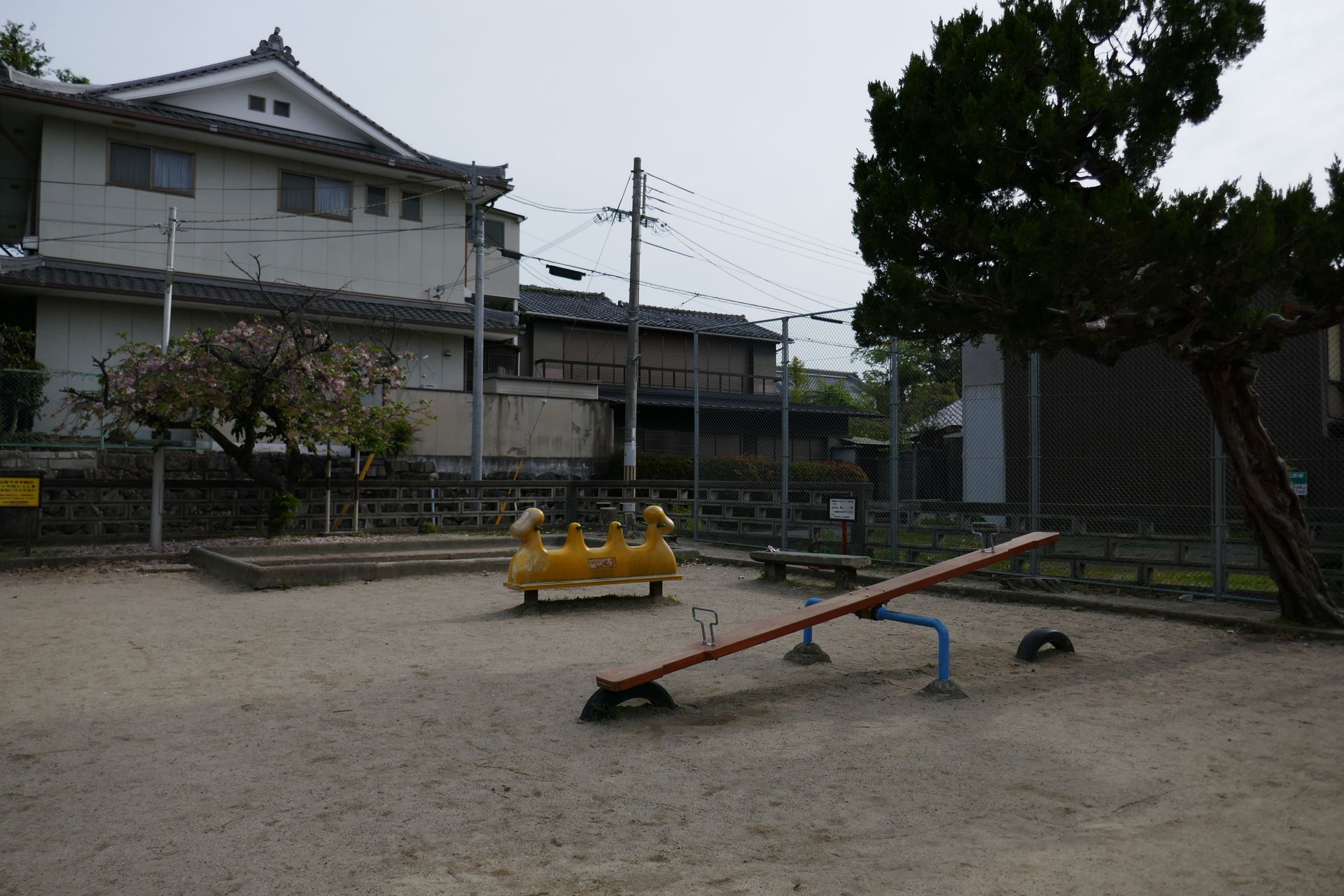
Then we went to the train station (to the tourist information) to get more information about the city. In the afternoon, we sat in a cafe and planned our 3 days in this historically important city with a matcha latte (Nadine always warm, Max prefers iced).

What we have noticed more and more is that especially sights of religious origin can be found in Japan. We also don't believe that this will change in other countries. We have already visited about 20 temples in Japan, it feels (and probably not just feels). Of course, each one is special in its own way, but we are all the more looking forward to other sights. The Buddhist Golden Pavilion Kinkaku-ji is a must in Kyoto. However, you should not visit it on weekends or public holidays (crowds of people as far as the eye can see).

Aside from temples, we were especially impressed by the former imperial palace in Kyoto. In addition to the building, we were fascinated by the Japanese gardens there.


Due to its proximity to the city of Uji, which is considered the "Matcha Mecca," Kyoto is also a matcha paradise. You can really get everything with this form of green tea (tencha). And yes, now Max is also addicted to it (especially to an iced matcha latte), following Nadine's lead. Nadine was most taken with the matcha Baumkuchen.
By the way, we are not yet fully immersed in the Japanese language, even though we already have given ourselves Japanese names: Nadimas and Maxaij. We simply took two typical endings of the language and added them to our names. When we walk through the streets, we like to say (in phonetics): 'Weni waddi mas'. This probably means 'The elevator door is closing'. We heard this sentence so often in elevators in Tokyo that it stuck in our heads. We are also proud to be able to say this whole sentence in Japanese, even though we occasionally receive puzzled looks.
In Kyoto, we noticed once again the huge respect for older people. Almost half of the seats on buses are reserved for frail and disabled people. However, from a conversation with a Japanese woman, it became clear that this respect goes against the grain of the younger generation. In Japan, you should never tell an older person what to do, but only give them carefully meant advice on how they could do it better in the future. In general, there is great social pressure in Japan to adhere to social rules, especially in public. This also fits with the fact that, in our observation, every 5th Japanese person wears a mouth mask that covers half of their face. There were even more in Tokyo. For us, this is unimaginable, for the Japanese, it is now completely normal and a kind of fashion. Although the origin of the mask is serious, it became more and more popular with every epidemic. The Japanese are a very sensitive and polite people. Therefore, they wear the mask not only for fashion reasons, but also for health and cosmetic reasons. They also like to carry an umbrella when it's sunny and sometimes wear gloves so that their skin doesn't tan. Pale skin is considered a beauty ideal.
Probably the highlight of the sights in Kyoto was the Fushimi Inari Taisha Shrine. It houses more than 1000 orange gates, which are set up as long tunnels, and you can walk through them to the top of Mount Inari, which is exactly what we did. The gates are also one of the iconic images of Japan.
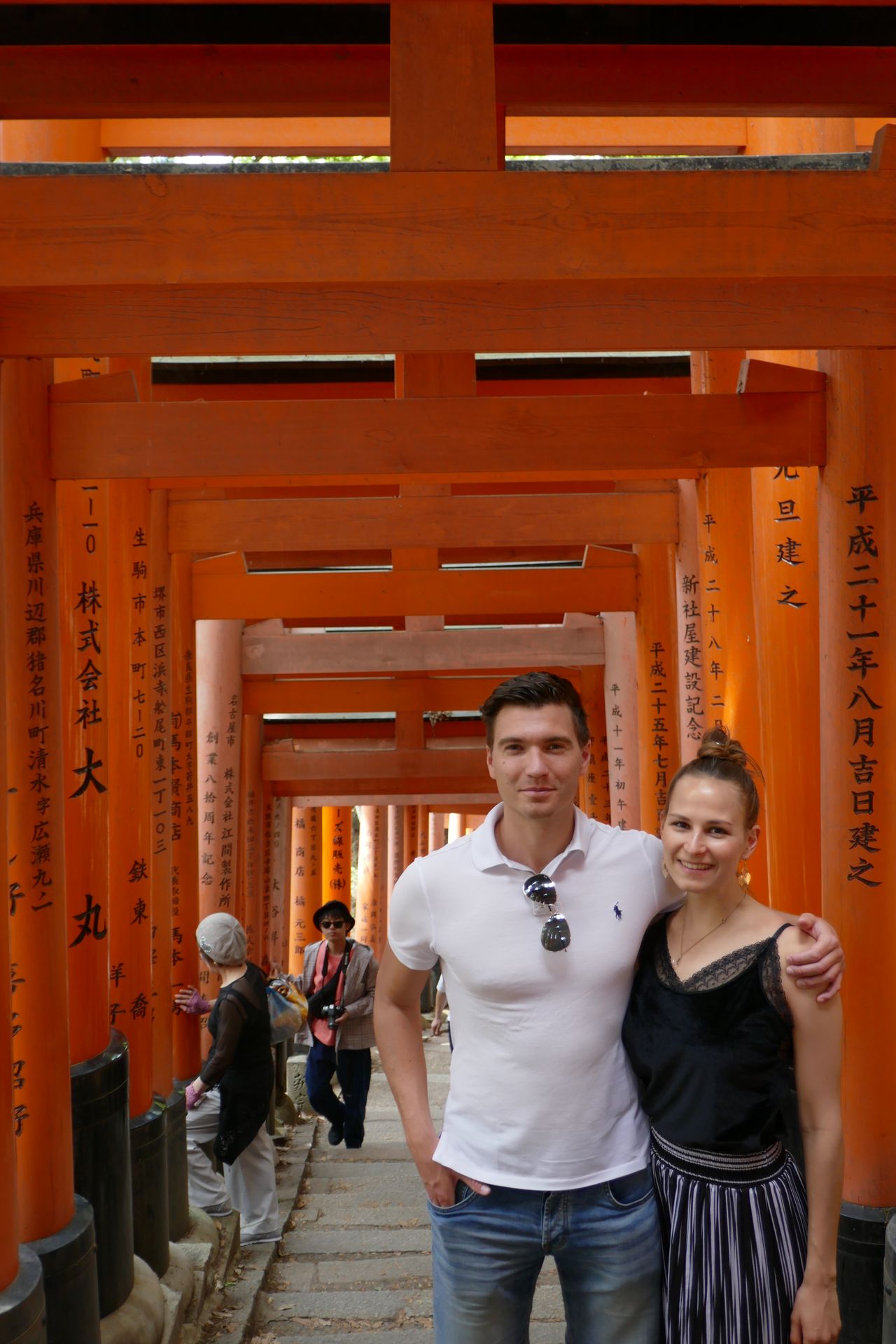
We also found the Gion district very cool, where there are still many old Japanese houses lined up next to each other. There and at other numerous historically significant sights in this city, we saw some young women and men in kimonos. This traditional Japanese clothing was really beautiful to look at and, as we later found out, you could rent them for the day in some shops. Some certainly brought their kimonos from home because they are still worn on festive occasions and celebrations (similar to dirndls/lederhosen).
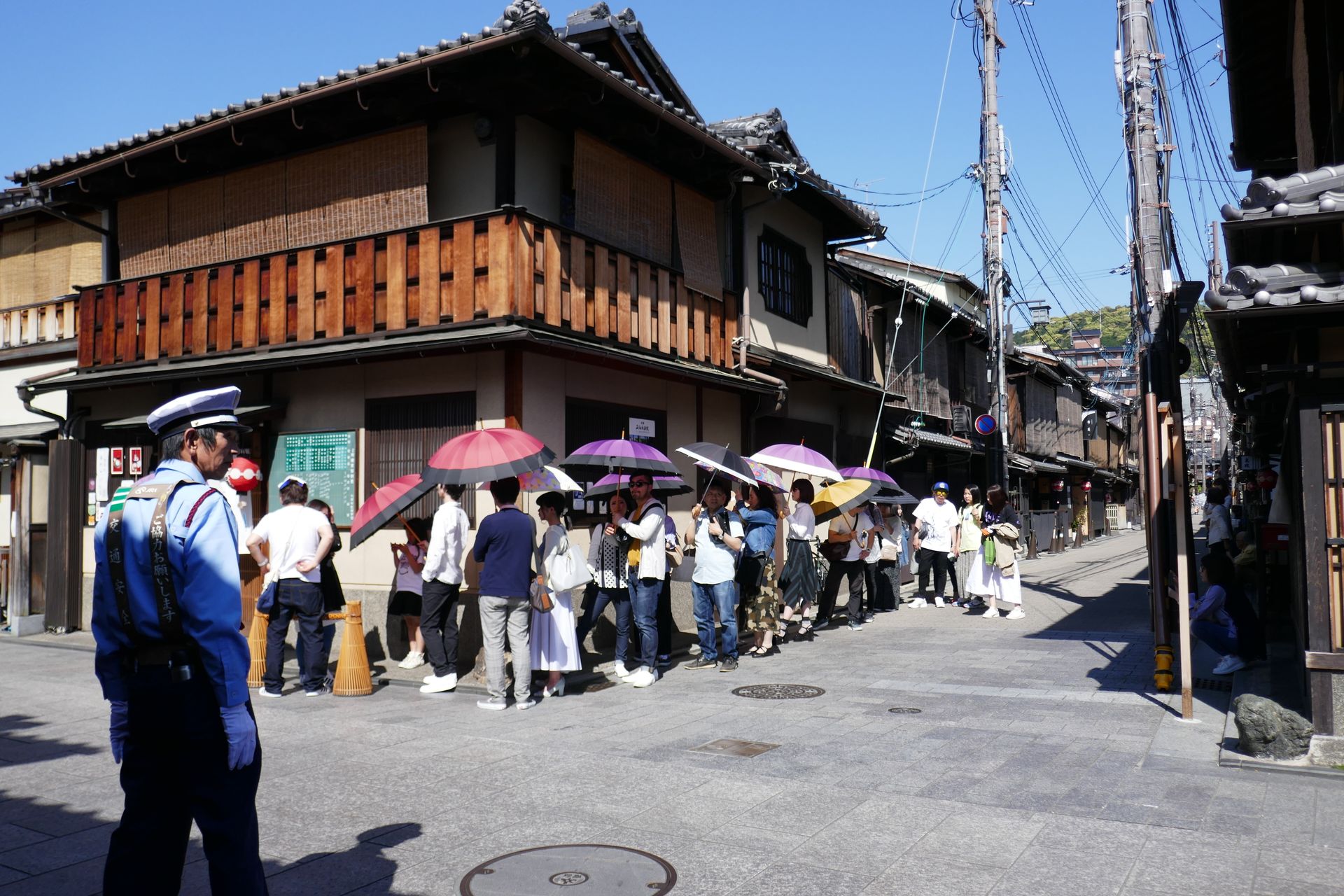
Our next destination Osaka will be the last on our journey through Japan. After that, we will continue by plane to Beijing - our first address in China.
Warm greetings to all of you!
செய்திமடலுக்கு சந்தாதராகவும்
பதில் (2)
christiane
Lieber Max, liebe Nadine!
Heute bin ich erst dazu gekommen, eure Beiträge in Ruhe am Rechner zu lesen.
Ich bin schon gespannt, was es in Osaka außer Tempeln (;-)) zu sehen gibt.
Bisher gibt es ja offensichtlich noch keine größeren Pannen zu vermelden und alles läuft mehr oder weniger nach Plan. Ein bisschen Flexibilität gehört bei Backpackern ja dazu... ;-)
Euch noch viele schöne Erlebnisse und bleibt gesund!
Herzliche Grüße
Christiane
Nama
Liebe Christiane,
vielen Dank für deinen netten Kommentar!
Irgendwie haben wir erst jetzt vermeldet bekommen, dass du etwas kommentierst hast.
Da hat wohl was mit der Technik nicht funktioniert…
Größere Pannen gibt es tatsächlich nicht zu vermelden.
Und gerade die Flexibilität ist bei so einer Reise ganz besonders wichtig, da man sich sonst sicher ganz viel Freiheit raubt, die man braucht, um ein Land kennenzulernen.
Vielen Dank!
Ganz liebe Grüße,
Nadine und Max

